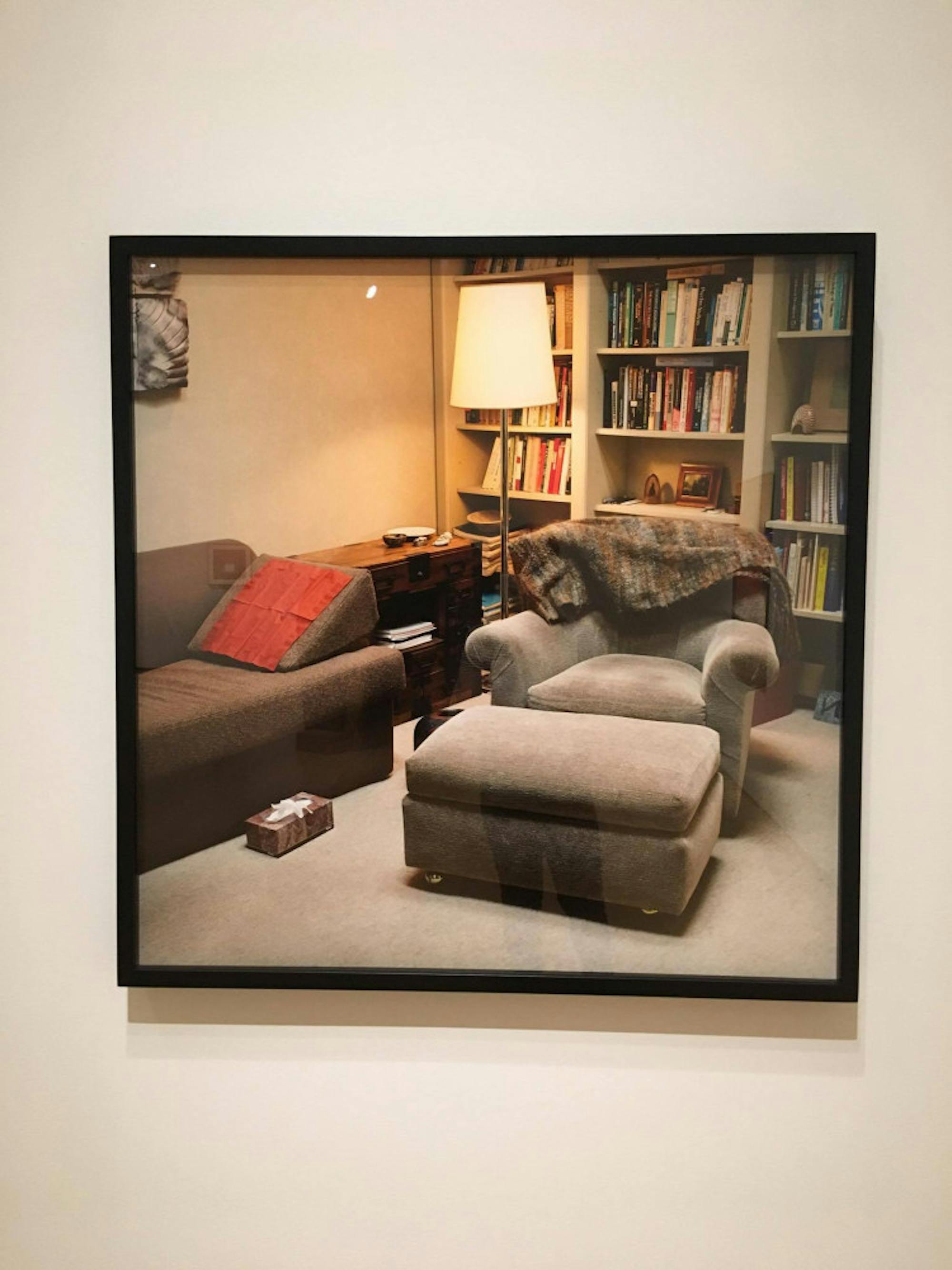As fall approaches, pumpkin spice aficionados and UGG boot lovers around the world are rejoicing. At the same time, the imminent season brings with it new art shows to the Boston area. The Museum of Fine Arts (MFA) is at the center of the Bostonian art scene, with its vast collection and the remarkable exhibitions it has put on in recent years.
"Seeking Stillness" (2017), one of four shows that opened this weekend at the MFA, is no exception. The exhibition features contemporary works by artists like Edward Weston and Agnes Martin, juxtaposed in an intellectually stimulating manner with traditional pieces from around the world, including ceramics from the Ming dynasty and Italian mannerist paintings. These contrasting parallels explore the way in which different artists have achieved transcendence, a form of contemplation through their very own art.
A powerful work displayed in the Linde Family Wing is a photo by local artist Shellburne Thurber, titled "West Newton, MA: Office with brown couch and red paper pillow protector" (2000), which is currently on loan to the MFA from the Barbara Krakow Gallery. Thurber captures the empty studio of a Massachusetts psychoanalyst, displaying a moment of calm after the figurative storm of a patient talking about their struggles. The furniture in the studio thus becomes the protagonist of this artwork. It gives the picture a simultaneously homely and unsettling feeling, as one would rarely find a box of Kleenex on the floor of the living room in a normal family home. The absence of people reveals a past presence that is still felt through these objects that might seem initially a little 'off.' The emptiness of the piece also draws the viewer into the scene, forcing them to imagine what they would do if they were lying on the couch in that studio in West Newton.
After passing "The Dead Christ with Angels" (c. 1524–27) by Italian mannerist Rosso Fiorentino on the right, visitors encounter several paintings from the Korean contemporary art movement known as Dansaekhwa, or “monochrome painting.” Artists like Ha Chong-Hyun adopt art-making processes that recall meditative practices. Ha utilizes "bae-ap-bub" ('back-pressure method') to push large amounts of paint across the frame of a specific artwork, in a manner reminiscent of the raking of white pebbles in zen gardens by Buddhist monks.
The visual effect is also similar, as can be seen in many of his abstract compositions like "Conjunction 15-214" (2015), in which the Korean artist moves a grayish shade of blue paint across coarse burlap. In a piece like this, the process is often much more interesting and noteworthy than the final result: In many ways, the process generates the meaning of the work. The quasi-spiritual experience of admiring Dansaekhwa works is enriched by John Cage’s musical compositions "In a Landscape" (1948) and "Dream" (1948) playing in the background of the gallery.
The bold choice of placing Chinese scrolls from the 17th century next to contemporary works like these proves to be particularly effective, because the audience inevitably ends up drawing comparisons between such different art forms. On the wall opposite "Conjunction 15-214" (2015) hangs a scroll by Lan Ying, titled "Lofty Mount Song" (1627). This piece displays a classic "shanshui" scene (water and mountains) with two men conversing in the bottom right corner of the scroll. This work shows a different route artists have pursued to seek introspection and meditative contemplation, climbing mountains and living as hermits, as described in an early text by Zen monk Shiwu.
By displaying formally diverse works such as Korean Dansaekhwa alongside scrolls from the Ming dynasty, "Seeking Stillness" invites thematic comparisons between different kinds of art. This mode of exhibiting new art right next to old art is an increasingly popular curatorial trend in galleries and museums all over the world, because it asks visitors to engage with the works in a more critical and analytic fashion. "Seeking Stillness" is a thoroughly enjoyable exhibition that re-evaluates the therapeutic purposes of art and how it allows different people to reach a dimension of tranquility and contemplation.
MFA fall exhibition preview: 'Seeking Stillness' offers an escape

“Seeking Stillness” (2017), one of four shows that opened this weekend at the MFA, features contemporary works by artists like Edward Weston and Agnes Martin juxtaposed in an intellectually stimulating manner with traditional pieces from around the world.





